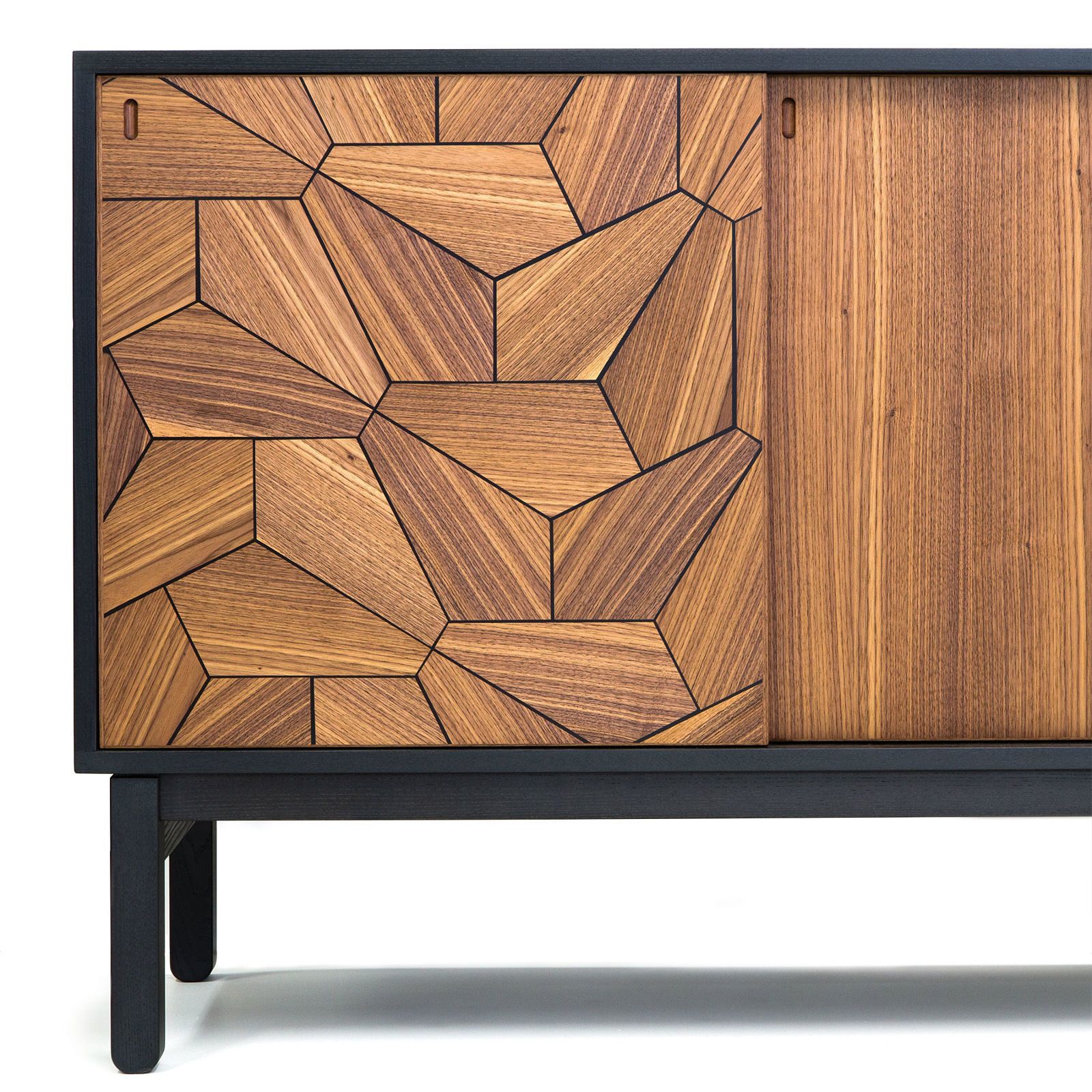The Power of the Pentagon

When Ottawa-based furniture maker Christopher Solar was invited to build a sideboard for the Canadian ambassador’s residence in Hanoi, he decided he wanted the cabinet’s doors to be the focus of the piece. He might have chosen wood with wild grain to create visual excitement, but Solar, a former software engineer with an affection for math, wanted to create a dynamic composition using plain-grained wood cut to repeating geometric shapes. He knew that tiling—filling a plane entirely with one repeated polygon—is a challenge mathematicians have savored for centuries. And he had recently read about Marjorie Rice, a self-taught amateur mathematician, who had shocked the math world in the 1970s by discovering new tiling patterns for pentagons. Solar, self-taught as a designer, was particularly inspired by her story. He also loved her patterns, especially “type 13,” which he used on his sideboard, cutting pentagons from thick-sliced walnut veneer and outlining them with pigmented epoxy resin. The way the pentagons nest, and the power of their pattern, echoes the interlocking of Solar’s twin talents in mathematics and design.
Fine Woodworking Recommended Products


Blum Drawer Front Adjuster Marking Template

Drafting Tools

























Log in or create an account to post a comment.
Sign up Log in